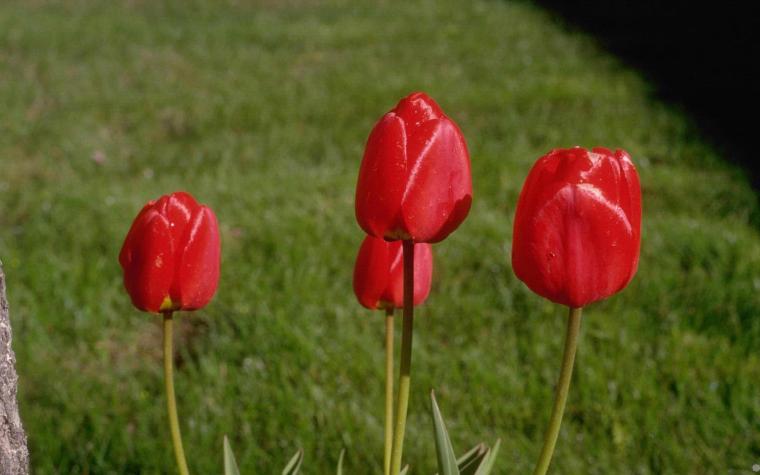Plant tulip bulbs in October, says MU Extension horticulturist.
COLUMBIA, Mo. – Many spring flowerbeds awaken with the vibrant colors of tulips. Once a valuable currency, tulip has a history as vibrant as its petals.
Plant tulip bulbs in October, said University of Missouri Extension horticulturist David Trinklein.
Look for plump bulbs free of gray discoloration, an indicator of disease. Spade soil to a depth of about 12 inches. Add organic matter and an organic fertilizer such as bone meal. Plant tulips about 2 ½ times as deep as the bulbs are wide and space 4-8 inches apart, depending upon the cultivar. Trinklein recommends planting in groups. Bulbs need water in dry autumns, but too much water causes bulb rot.
To flower, tulip bulbs need about 10 weeks of temperatures near 38 degrees Fahrenheit. That’s why tulips are planted in fall.
Many gardeners treat tulips as annuals in Missouri, Trinklein said. Tulips like cool weather, and Missouri’s climate warms too early in the growing season for tulips to make enough food to naturalize well. They usually decline in vigor and bloom quality when bulbs remain in the ground or are dug in the spring after flowering for fall replanting.
Mice, voles, gophers and other rodents enjoy tulip bulbs as tasty fall and winter treats. Some gardeners shield bulbs from damage by putting small mesh cages of hardware cloth or welded wire around them.
Perhaps no other flower is as closely associated with a country as the tulip, Trinklein said. Tulip bulbs are an important revenue source in Holland’s economy. Holland grows more than 3 billion tulips each year. The United States imports about 1 billion of them.
Although the tulip conjures visions of Dutch wooden shoes and windmills, it is did not come from Holland.
“Tulip” is thought to be a corruption of the Persian word “toliban,” or turban, perhaps because of the flower’s resemblance to the traditional cloth headwear worn in the Middle East, Trinklein said. Tulip probably originated in the mountain ranges of central Asia near the city of Islamabad, Pakistan.
It spread to other areas by 1000 A.D. and did not reach Holland until 1593. Flemish botanist Carolus Clusius gets credit for planting the first tulips in Holland, Trinklein said. However, he refused to give or sell bulbs to others. History suggests frustrated buyers stole part of his collection. “Thus began the Dutch tulip industry.”
The tulip was highly coveted for its beauty and rarity. The bulbs commanded high prices and the tulip became a status symbol only the wealthy could afford. As demand grew for tulip bulbs, they became a form of currency in Holland.
Trinklein said an early 17th-century sale bill recorded the following trade for a single tulip bulb: “two loads of wheat, four loads of rye, four fat oxen, five swine, 12 sheep, two hogsheads of wine, four barrels of beer, two barrels of butter, 1,000 pounds of cheese, a bed with linens, a suit of clothes, a silver tankard and a sizeable wagon to haul it all away.”
Coveting of tulips led to a period of runaway speculation called “tulip mania.” Buyers paid high prices with hopes of selling at even higher prices. Tulips prices were quoted much as stocks are today. The bubble burst in 1637 when tulip prices plummeted. Panicked speculators began selling off bulbs and pandemonium set in. Many wealthy people became paupers overnight. Today, economists still use “tulip mania” as an example of speculation gone bad.
“Today, one does not need to be aristocratic or wealthy to enjoy this colorful harbinger of spring, which comes in a variety of types and colors,” said Trinklein.
For more information, see Trinklein’s article “Forcing Bulbs Indoors” (MU Missouri Environment and Garden newsletter, October 2009).

